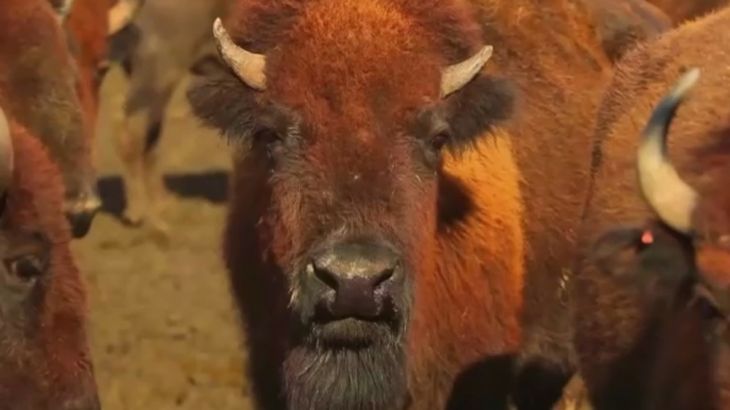
Bringing back the bison
What happens when the once almost extinct bison is reintroduced into the over-farmed prairie ecosystem?
The Nachusa Grasslands Preserve in Franklin Grove, Illinois, is currently under the care of The Nature Conservancy, a charitable environmental organisation, as they try to restore a piece of American history that was almost extinct – the grassland prairie.
Where there was once an abundance of grasslands in the United States, there is now less than 0.01 percent of the original grassland areas left standing. Dozens of plant species native to the grasslands are also at risk of extinction, along with their natural habitat.
Keep reading
list of 4 itemsCalifornia farmworkers cheer new housing in town scarred by mass shooting
At least 8 people dead as bus carrying farmworkers crashes in Florida
Polish farmers suspend blockade of Ukraine border
This is such a cool thing that we've returned this iconic mammal to Illinois.
With prairie grasslands heralded as the climate change equivalent of a rainforest in terms of long-term carbon dioxide storage in its soil, the gradual disappearance of this particular ecosystem is being combated in every way experts at The Nature Conservancy know how.
One of the methods of ensuring the grasslands are achieving maximum growth potential is the manual collection of species of plant seeds from remnant prairies to sow in the new expanses.
Approximately 250 species are planted annually by the Conservancy and their volunteers, equating millions of actual seeds going into the ground.
But with the excitement of planting above the numbers suggested by conventional wisdom, that’s 23kg instead of 4.5kg of seeds a year, arose the issue of overly successful tall grass growth. In order to maintain the steady revival of the grasslands and all facets of the ecosystem, something had to be introduced to “even out the playing field” and thin out the quantities of grass.
The natural solution was a herd of bison. Nutrient cycling due to grazing and excretion on the grasslands provides a natural diversity to the area, while the natural weight – up to 900kg for a full-grown bull – and feeding habits of the bison also lend to the “flattening” out necessary to the overall health of the preserve.
But why did the bison need reintroduction to their natural habitat? Where had the animals disappeared to?
“There was a tremendous slaughter of bison here [in Illinois] in the 1870s and 1880s,” says Jeff Walk, the lead scientist of the Illinois chapter of The Nature Conservancy.
“As estimated, by the turn of the 1900s, there were 400 to 1,000 animals that had persisted out of that massive herd of 30 to 60 million … that’s absolutely close to extinction.”
With more than two dozen scientists studying the growth and steady evolution of the project, including smaller species of animals and insects, the Nachusa Grasslands are set for a blossoming future.
Techknow travels to the Nachusa Grasslands to find out how wild bison help to restore the American prairie.